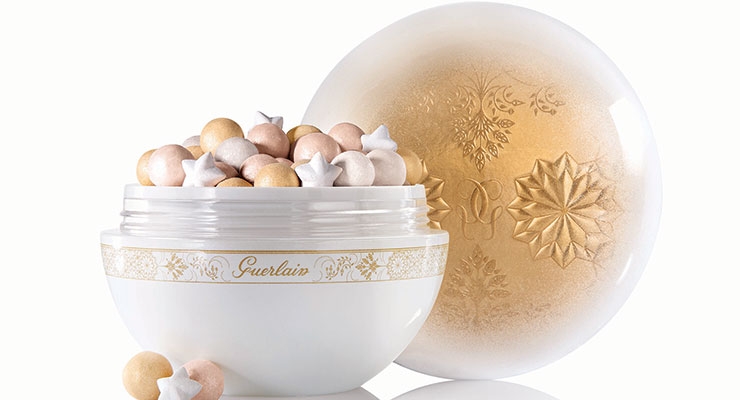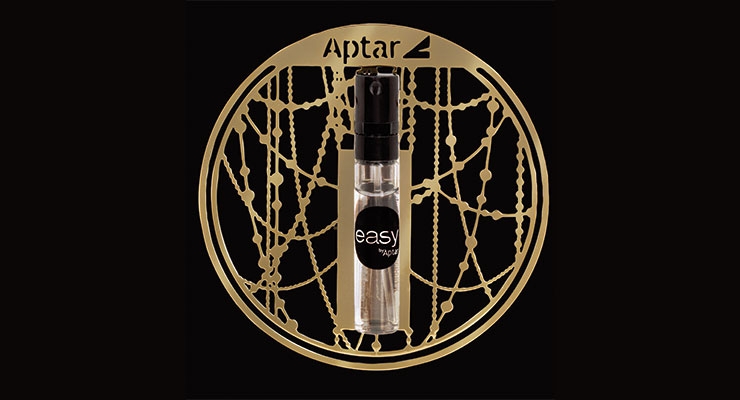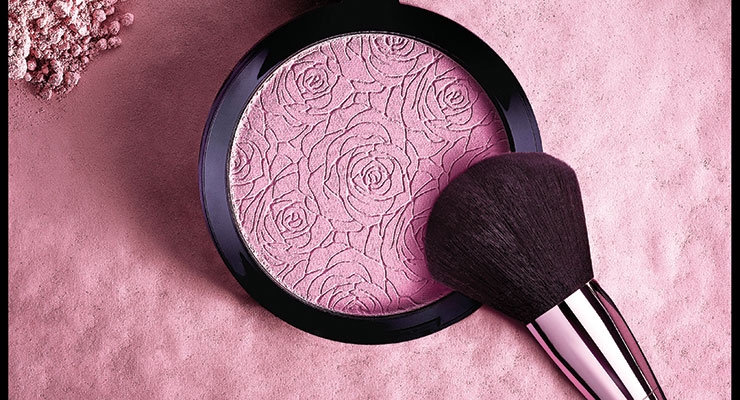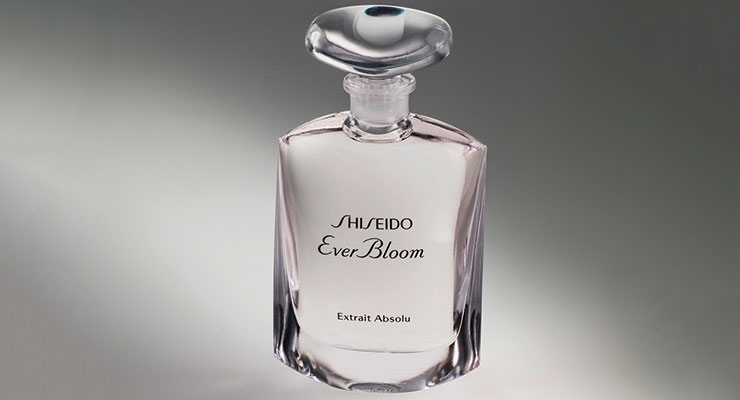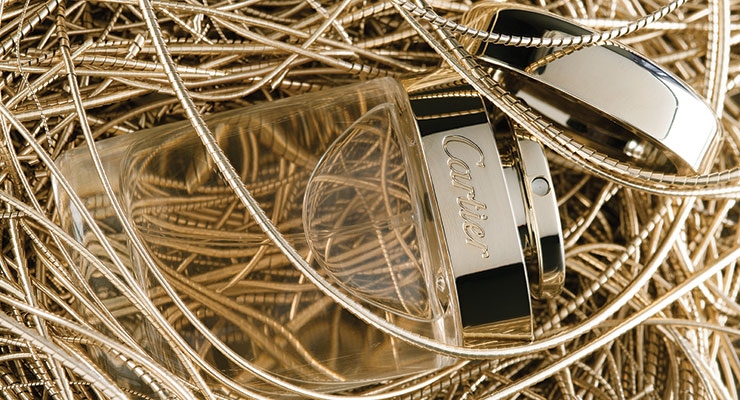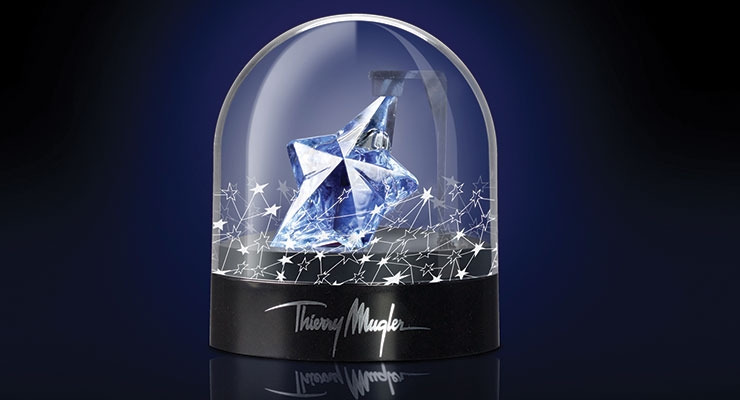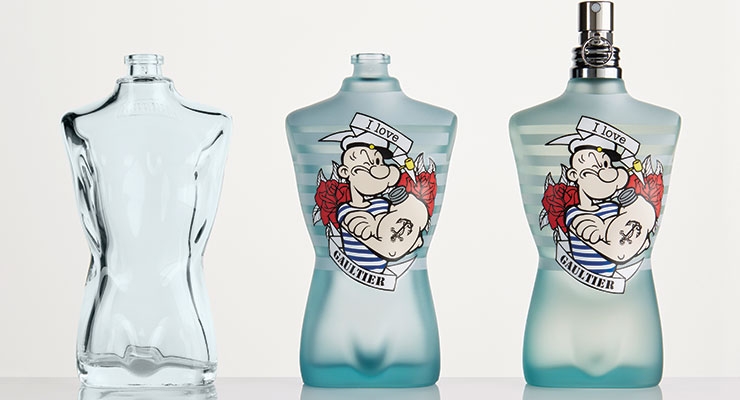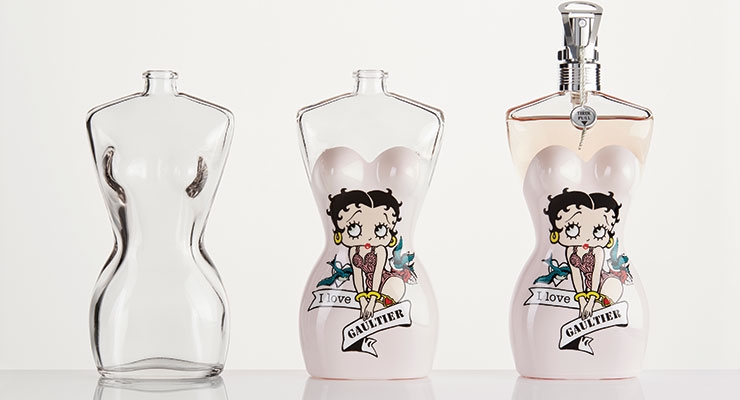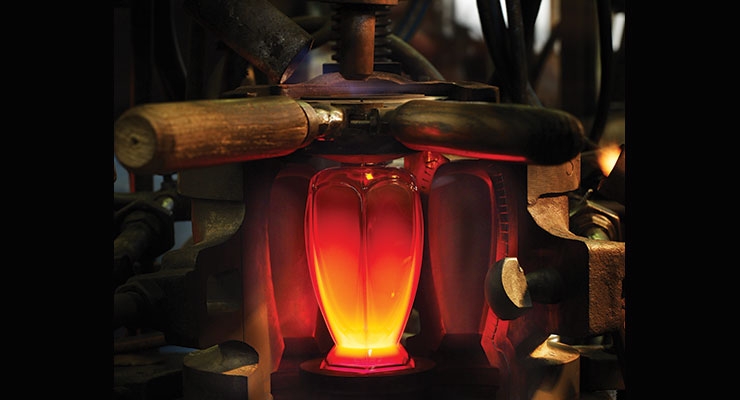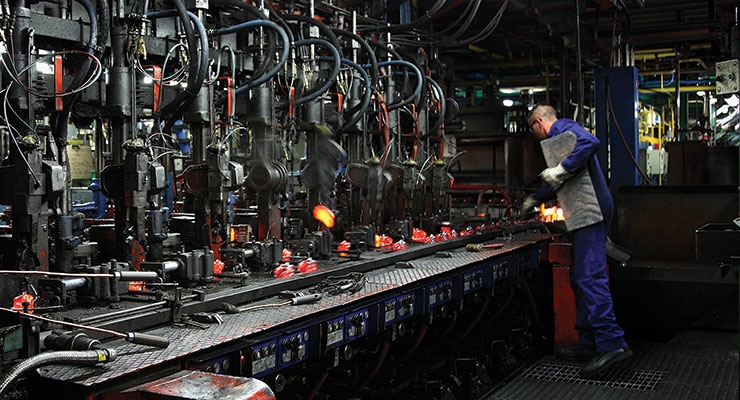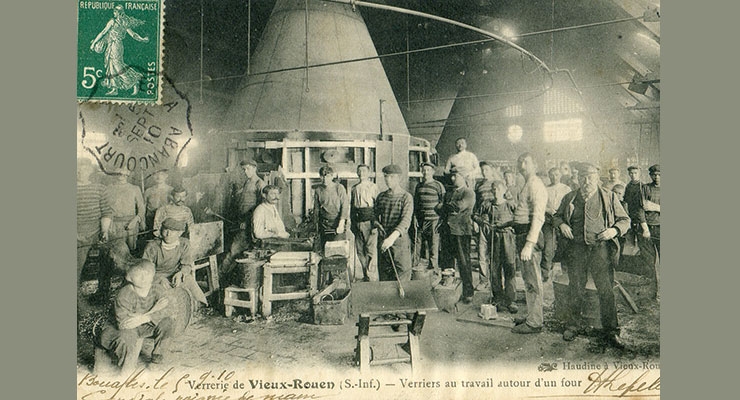Joanna Cosgrove, Contributing Editor06.01.16
Home to some of the world’s most iconic fragrance, beauty and skin care brands, France is renowned for producing products that strike the perfect balance between classic luxury and modern chic. The legendary houses of Dior, Chanel, Givenchy, Yves Saint Laurent, Guerlain and Lancôme, among others, finesse their cosmetic products with glass, plastic and metal packaging accoutrements that balance technology with refined beauty and engaging sensory details.
According to Arnaud Fauquet, business development director with Productions Réalisations Plastiques (PRP), French products are emblematic because they succeed in melding luxury, prestige, tradition and modernism. “This ‘savoir faire’, which has influenced the other markets in the cosmetic area worldwide, makes them unique,” he says. “This market has the ability to renew itself by pushing new trends.”
Packaging innovations from PRP focus on plastic-based technologies, and the company offers a wide range of personalized decoration features. Some of the company’s latest developments pertain to liquid metallizing on bottles, jars and caps, as well as a thermo-welded aluminum complex. “This thermo-welded multi-complex allows a better product restitution rate than existing solutions on the market, gets an excellent ‘barrier effect’ and bulk formula protection,” says Fauquet, who adds that the concept is suitable for skin care, makeup and fragrances produced in airless and non-airless conditions.
Mecca for Magnificent Fragrances
Popularized during the rule of Louis XIV and famously iconized by Coco Chanel, the enduring allure of French perfumes is acclaimed around the world. Even today, the fragrance sector continues to be a robust aspect of the French beauty culture.
“In 2015, the fragrance industry saw over 2,000 new launches!” exclaims Des McEttrick, market development director for NA Beauty at AptarGroup, noting that around 80% of those launches were in the flanker vein. “To animate their main lines, our customers are expecting new ideas not only in decoration, but also in the fragrance gesture (method of application).”
As an alternative to typical spray dispensing, Aptar Beauty + Home created Note, a bottle topper that revisits the timeless gesture of elegantly applying fragrance directly to the skin. The first launch using this approach is “Touche de Parfum” by Dior, a flanker iteration of its popular J’Adore fragrance.
Note consists of a transparent glass applicator fitted into a bottle cap. Each time the bottle is opened, the applicator fills itself automatically. The fragrance is dispensed through a gentle capillary action, when the user touches the applicator to the skin.
Last year Aptar also launched a luxury sampling solution with a gorgeous nod to the Art Deco era. The Easy Clip Card is a metal plate that features stylish scrollwork and provides an elegant alternative to traditional cardstock options for trial-sized fragrance units.
To commemorate the 17th World Congress of the Rose, held in Lyon, France, in 2015, Strand Cosmetics Europe created a rose-themed range of skin care and makeup. One of the flagship products of the collection is Poudre Volupte Parfumante, a rose-scented powdered perfume that’s applied to the skin with a large brush. The compact and the rose-colored perfumed powder are elegantly embossed with a rose to create both a visual and olfactory sensation, says Stéphanie Reymond, the company’s operational marketing manager.
The line highlights the rose as an element of Lyon’s French heritage while spotlighting the flower as a symbol for beauty, femininity and French elegance—two qualities important to Strand Cosmetics Europe, as the company was founded in France in 1964 by an American who wanted to import and develop makeup formulas and powder compacting techniques then unknown in Europe.
One of the most important components of traditional fragrance packaging is the bottle. As part of the “Glass Valley” association of glassmakers, Waltersperger has a rich history of crafting beautiful, exceptionally high-quality fragrance bottles, and is one of the last to observe an exclusively semi-mechanized process. “It is very difficult because it relies mainly on very rare glassmakers and not machines, but it gives you the flexibility to make exceptional bottles the industrial glassmakers in France and Italy cannot produce anymore,” says Arturo Franco, president of Waltersperger.
Having already made their mark on prestigious brands like Chanel, Armani, Yves Saint-Laurent, Prada, and Dior (the company produced a giant factice of Dior Sauvage), Waltersperger is also elevating the packaging panache of newer, niche brands such as By Kilian and Clive Christian.
The company recently produced the flacon for Shiseido’s Ever Bloom Extrait Absolu, which is characterized by a rounded shape and a dainty glass stopper that’s polished to remove all visible traces of the mold seaming. “The bottom of the bottle is completely flat cut and polished and then the regulation labeling is silk-printed on a very tiny surface,” Franco says. “The neck of the bottle is drilled and the plug of the cap is plastic injected to guarantee a watertight closure.”
Franco says the shape of the glass stopper proved tricky, as it was difficult to avoid distortions and surface imperfections. “We made the mold twice,” he says. “The decoration in the bottom was also very difficult. We worked hard with our local partner to get it [right].”
Another member of the Glass Valley, MMB, is also a maker of artisanal quality fragrance bottles, with more than 40 years in the field of models and prototypes and over 20 years of experience in 3D printing and Additive Manufacturing. Linda Louis, who oversees business development and digital marketing for MMB, says that ensuring that the package is produced with all of the original creative intent requires a constant dialogue between designers and engineers.
“Very often, our expertise is both highly technological as well as manual; the models that we produce require real dexterity,” she says, pointing to the bottle MMB created for Cartier’s Baiser Volé (Stolen Kiss) fragrance.
The simple yet technically complex bottle begins with the use of MMB’s five-axis machining center for superior precision, then the bottle is completely sanded and polished by hand to obtain “perfect transparency.” A fine hoop is engraved on the lid, which features polished brass and gold plating.
Limited Edition Luxe
Special edition fragrances are a French specialty. Last summer, DAPY worked with Clarins to produce a unique presentation for Thierry Mugler’s Angel fragrance. The Thierry Mugler Snowball Angel was created for the holidays to house a limited edition travel size of its perfume, Angel. The dome of the globe was injection molded with clear SAN and screwed onto a black ABS base. The dome is ringed with a constellation of matted and shiny stars created by rotary SSP, and the Thierry Mugler logo is stamped on the base in silver. David Jacquet, national sales manager, DAPY Paris USA, explains that the sample-sized fragrance inside the dome is displayed by a small, flexible PP post that stabilizes one needle of the bottle’s glass star shape but also adapts to the “glass tolerance.”
French companies Nigermat and Pariche teamed together to produce the painstaking deco work for the 2016 Summer versions of Jean-Paul Gaultier fragrances, which were whimsically themed after iconic cartoon characters Betty Boop and Popeye.
The Betty Boop bottle combines translucent white glass with white lacquering—a process that required the mechanical removal of the white coating on the top of the bottle before the signature Betty Boop color elements and protective lacquering could be applied. The Popeye bottle was approached similarly. The light blue glass is sanded and lacquered, then the jersey stripes are mechanically removed to create a clean canvas for the Popeye color work and protective lacquering.
“Thirteen finishing operations were needed [from] four major workshops within Nigermat and Pariche Companies,” says CEO Stephan Pariche. “We’ve never pushed the technique so far.”
Pochet du Corval took its glassmaking expertise to luxurious heights with the production of fragrance bottles for Givenchy and Guerlain. Givenchy’s Gentlemen Only Parisian Break, a limited 2016 collector’s edition scent, is a masterpiece in flat glass distribution and is adorned with a blue screen printing that, according to Pochet, is evocative of the banks of the Seine River. The bottle is topped with a silver anodized aluminum cap from Qualipac that’s engraved with the Givenchy logo.
For L’Homme Ideal Guerlain, Pochet created a bottle that visually echoes a beveled, embossed “square within a square” design. The contemporary design’s clean lines are enhanced with soft, matte black lacquered sides and perfectly flat shoulders. A delicately embossed Qualipac cap combines masculine strength and elegance, while Solev’s duet of black lacquer finishes offers a final touch that’s suggestive of both clinical precision and lushness.
“The collaborative efficiency of our design team is exemplified by the flawless assembling of electroplated collar with the glass,” notes Mathieu Pivaudran, director of communications for the Pochet Goup and director of marketing and creation for Solev and Pochet du Courval. “This concept harmoniously blends the elegant finesse of the bottle design with the soft, indulgent yet distinct, black cap.”
Couture Color Cosmetics
Epitomized by the elegance of Parisian women, France continues to be an epicenter of high-quality cosmetics and skin care products. French beauty brands pay homage to tradition by operating at the intersection of high-quality and high-end, while keeping an eye on global trends to interpret with uniquely French sensibilities.
A prime example is the newest edition of Givenchy’s Rouge Interdit Vinyl lipstick. Givenchy wanted to create a package that exuded French couture and turned to Albéa, who designed a base, cap and mechanism, as well as a decoration that integrates a fabric effect on the cap to deliver dynamic depth and shine.
The package is made of a black-tinted ABS base embellished with an imitation ribbon engraving on one side and the Givenchy brand name engraving on the other. On the opposite end of the tube is a 4G logo. The exterior of the clear PETG cap is varnished for a luminous sparkle.
“The ABS interior reveals an imitation-ribbon engraving, overlaid with a hot stamp on each side of the lipstick tube,” says Cecile Tuil, Albéa’s vice president of communications. “The two pieces of the cap are welded together using ultrasonic sealing. The finesse of the engraving and the shimmering details make this exclusive design dazzle.”
Givenchy chose Albéa’s black anodized Baystick guided mechanism, which is entirely sheathed and beveled for a perfect fit when the creamy lipstick is applied.
This lipstick is made in France at Albéa sites at Plouhinec, which specializes in lipstick production, and Simandre, which specializes in surface treatments and decoration technologies.
Cosmogen recently produced the elegant jar that houses Guerlain’s Météorites Flocons Enchantés (Delighted Meteorite Flakes) illuminating powder pearls. The package base consists of internal and external shells made of white injected PP and crystal clear injected SAN, respectively. The shells are sprayed a pearly white and finished with a silkscreened pass of gold. The cap, also made of two parts, reveals a delicate gold decoration through a gradient pearly white finish.
“Technically, the challenge was to get a homogeneous pearly white lacquering on the base and a homogeneous gradient on the cap,” says Mylène Meunier, vice president of sales and marketing at Cosmogen. “The silkscreened dotted gold around the base has been made on a reduced area. Finally, the cap rises to the challenge to mask its technical aspects, such as the insert, and to enhance the gold decoration.”
Cosmogen is also hoping to leave its mark in the skin care realm with Attract One, an instrument that combines aesthetics and sophistication with hygiene and a distinctly French flair. Attract One is unlike current spatulas, brushes and roller applicators in that it’s designed to apply anti-aging and wrinkle reduction formulations in quick, easy gestures. A combination of a magnet and a ball applicator, the skin contact surface is three times larger than a typical roll-on applicator.
“French brands are looking to match market expectations and it is also an opportunity for them to launch on their domestic market, innovations from far away, like the famous BB and CC creams and the latest complexion cushion, directly inspired [by] Korea,” says Strand’s Reymond. To that end, Strand developed its own iteration of a cushion compact for an unspecified French brand in search of a cushion foundation that married an ultralight formula with a package that offered “new gestures.” The compact’s point of differentiation is that it’s produced via a mostly automated industrial filling and construction process that adjusts the viscosity of the formula to allow impregnation of the sponge in a dedicated space.
With a hallowed connection to its classic and fashionable past, and a keen eye focused on the globe’s hottest trends, it’s easy to see why French brands and the packagers they rely on continue to dominate as a world leader in beauty, fragrance and skin care.
The French beauty market is challenging and fast-moving, and competition is fierce but, according to Albéa’s Cecile Tuil, it’s also very innovative and sparked by continuous new launches and trends. Tuil identified the following five trends currently influencing the French packaging sector.
Premiumization: Mass brands want to be perceived as premium, luxury brands want to be more exclusive with a higher degree of personalization, and niche/masstige brands want to differentiate by delivering on originality and a unique positioning. For packaging, this means staying abreast of new technologies while offering a variety of decoration and finishing technologies that always optimize costs.
Fast-paced market: A fast-paced market plus an increasing number of launches per year and shrinking “time to market” means packaging suppliers need to be progressively flexible, offering customers the possibilities to run smaller quantities for limited edition series, seasonal launches and exclusive collections.
Formula hybridization: Complex, multi-tasking products (i.e., those that combine color cosmetics, SPF, moisturizing properties, etc.) need high-standard packaging that dovetails to formula qualities, meets efficiencies and enhances the overall consumer experience.
Market sub-segmentation: Beauty movements from Asia (Korea) continue to seduce European and American consumers, and French global and regional brands are increasingly incorporating these trends into their product lines. Packaging is the key to bringing added value.
New directions and ergonomics: There’s been a heightened demand for professional makeup applicators (linked to contouring trends), not to mention easy-to-use packaging for seniors, and new forms of packaging tailored for use by men.
There is a region in France where the art of glass bottle making is revered unlike any other place in the world. It is called La Glass Vallée (The Glass Valley).
The Glass Valley is located about two hours from Paris, in the Bresle Valley that straddles Normandy and Picardy, and has been the strategic location for glassmaking dating back to 1430. Abundantly forested, the region is a prime source for potassium-rich ash, which is necessary for fusing sand into glass.
Now an association of sorts, it is comprised of 60 connected specialized businesses and foundries and 7,500 skilled designers, mold makers, glassmakers and sorters who supply about 75% of the total sum of luxury bottles for prestige perfume and spirit brands. Customers include some of the world’s most highly recognized brands, including LVMH, L’Oréal, Coty and Estée Lauder, not to mention Chanel, Guerlain, Dior, Paco Rabane, Thierry Mugler and Jean-Paul Gaultier.
“Established for nearly 15 years, our Glass Valley association aims to strengthen cooperation between our businesses and provide our customers with products that are ‘Made in France’ and a quality service increasingly tuned to aggregate supply,” explains Valerie Tellier, president of The Glass Valley. “This means that innovation, the development of our employees, investment, industrial performance and social and environmental responsibility of our firms is at the heart of our daily lives and actions of our association.”
Tellier adds that the U.S. market continues to be ripe with opportunity for Glass Valley member companies. “Going to the U.S. market is an export priority,” she says, “and the Normandy region is currently supporting a first U.S. tour of high-tech decoration [with] member glass companies ASB, Devaux, STMF and Val Laquage Waltersperge."
According to Arnaud Fauquet, business development director with Productions Réalisations Plastiques (PRP), French products are emblematic because they succeed in melding luxury, prestige, tradition and modernism. “This ‘savoir faire’, which has influenced the other markets in the cosmetic area worldwide, makes them unique,” he says. “This market has the ability to renew itself by pushing new trends.”
Packaging innovations from PRP focus on plastic-based technologies, and the company offers a wide range of personalized decoration features. Some of the company’s latest developments pertain to liquid metallizing on bottles, jars and caps, as well as a thermo-welded aluminum complex. “This thermo-welded multi-complex allows a better product restitution rate than existing solutions on the market, gets an excellent ‘barrier effect’ and bulk formula protection,” says Fauquet, who adds that the concept is suitable for skin care, makeup and fragrances produced in airless and non-airless conditions.
Mecca for Magnificent Fragrances
Popularized during the rule of Louis XIV and famously iconized by Coco Chanel, the enduring allure of French perfumes is acclaimed around the world. Even today, the fragrance sector continues to be a robust aspect of the French beauty culture.
“In 2015, the fragrance industry saw over 2,000 new launches!” exclaims Des McEttrick, market development director for NA Beauty at AptarGroup, noting that around 80% of those launches were in the flanker vein. “To animate their main lines, our customers are expecting new ideas not only in decoration, but also in the fragrance gesture (method of application).”
As an alternative to typical spray dispensing, Aptar Beauty + Home created Note, a bottle topper that revisits the timeless gesture of elegantly applying fragrance directly to the skin. The first launch using this approach is “Touche de Parfum” by Dior, a flanker iteration of its popular J’Adore fragrance.
Note consists of a transparent glass applicator fitted into a bottle cap. Each time the bottle is opened, the applicator fills itself automatically. The fragrance is dispensed through a gentle capillary action, when the user touches the applicator to the skin.
Last year Aptar also launched a luxury sampling solution with a gorgeous nod to the Art Deco era. The Easy Clip Card is a metal plate that features stylish scrollwork and provides an elegant alternative to traditional cardstock options for trial-sized fragrance units.
To commemorate the 17th World Congress of the Rose, held in Lyon, France, in 2015, Strand Cosmetics Europe created a rose-themed range of skin care and makeup. One of the flagship products of the collection is Poudre Volupte Parfumante, a rose-scented powdered perfume that’s applied to the skin with a large brush. The compact and the rose-colored perfumed powder are elegantly embossed with a rose to create both a visual and olfactory sensation, says Stéphanie Reymond, the company’s operational marketing manager.
The line highlights the rose as an element of Lyon’s French heritage while spotlighting the flower as a symbol for beauty, femininity and French elegance—two qualities important to Strand Cosmetics Europe, as the company was founded in France in 1964 by an American who wanted to import and develop makeup formulas and powder compacting techniques then unknown in Europe.
One of the most important components of traditional fragrance packaging is the bottle. As part of the “Glass Valley” association of glassmakers, Waltersperger has a rich history of crafting beautiful, exceptionally high-quality fragrance bottles, and is one of the last to observe an exclusively semi-mechanized process. “It is very difficult because it relies mainly on very rare glassmakers and not machines, but it gives you the flexibility to make exceptional bottles the industrial glassmakers in France and Italy cannot produce anymore,” says Arturo Franco, president of Waltersperger.
Having already made their mark on prestigious brands like Chanel, Armani, Yves Saint-Laurent, Prada, and Dior (the company produced a giant factice of Dior Sauvage), Waltersperger is also elevating the packaging panache of newer, niche brands such as By Kilian and Clive Christian.
The company recently produced the flacon for Shiseido’s Ever Bloom Extrait Absolu, which is characterized by a rounded shape and a dainty glass stopper that’s polished to remove all visible traces of the mold seaming. “The bottom of the bottle is completely flat cut and polished and then the regulation labeling is silk-printed on a very tiny surface,” Franco says. “The neck of the bottle is drilled and the plug of the cap is plastic injected to guarantee a watertight closure.”
Franco says the shape of the glass stopper proved tricky, as it was difficult to avoid distortions and surface imperfections. “We made the mold twice,” he says. “The decoration in the bottom was also very difficult. We worked hard with our local partner to get it [right].”
Another member of the Glass Valley, MMB, is also a maker of artisanal quality fragrance bottles, with more than 40 years in the field of models and prototypes and over 20 years of experience in 3D printing and Additive Manufacturing. Linda Louis, who oversees business development and digital marketing for MMB, says that ensuring that the package is produced with all of the original creative intent requires a constant dialogue between designers and engineers.
“Very often, our expertise is both highly technological as well as manual; the models that we produce require real dexterity,” she says, pointing to the bottle MMB created for Cartier’s Baiser Volé (Stolen Kiss) fragrance.
The simple yet technically complex bottle begins with the use of MMB’s five-axis machining center for superior precision, then the bottle is completely sanded and polished by hand to obtain “perfect transparency.” A fine hoop is engraved on the lid, which features polished brass and gold plating.
Limited Edition Luxe
Special edition fragrances are a French specialty. Last summer, DAPY worked with Clarins to produce a unique presentation for Thierry Mugler’s Angel fragrance. The Thierry Mugler Snowball Angel was created for the holidays to house a limited edition travel size of its perfume, Angel. The dome of the globe was injection molded with clear SAN and screwed onto a black ABS base. The dome is ringed with a constellation of matted and shiny stars created by rotary SSP, and the Thierry Mugler logo is stamped on the base in silver. David Jacquet, national sales manager, DAPY Paris USA, explains that the sample-sized fragrance inside the dome is displayed by a small, flexible PP post that stabilizes one needle of the bottle’s glass star shape but also adapts to the “glass tolerance.”
French companies Nigermat and Pariche teamed together to produce the painstaking deco work for the 2016 Summer versions of Jean-Paul Gaultier fragrances, which were whimsically themed after iconic cartoon characters Betty Boop and Popeye.
The Betty Boop bottle combines translucent white glass with white lacquering—a process that required the mechanical removal of the white coating on the top of the bottle before the signature Betty Boop color elements and protective lacquering could be applied. The Popeye bottle was approached similarly. The light blue glass is sanded and lacquered, then the jersey stripes are mechanically removed to create a clean canvas for the Popeye color work and protective lacquering.
“Thirteen finishing operations were needed [from] four major workshops within Nigermat and Pariche Companies,” says CEO Stephan Pariche. “We’ve never pushed the technique so far.”
Pochet du Corval took its glassmaking expertise to luxurious heights with the production of fragrance bottles for Givenchy and Guerlain. Givenchy’s Gentlemen Only Parisian Break, a limited 2016 collector’s edition scent, is a masterpiece in flat glass distribution and is adorned with a blue screen printing that, according to Pochet, is evocative of the banks of the Seine River. The bottle is topped with a silver anodized aluminum cap from Qualipac that’s engraved with the Givenchy logo.
For L’Homme Ideal Guerlain, Pochet created a bottle that visually echoes a beveled, embossed “square within a square” design. The contemporary design’s clean lines are enhanced with soft, matte black lacquered sides and perfectly flat shoulders. A delicately embossed Qualipac cap combines masculine strength and elegance, while Solev’s duet of black lacquer finishes offers a final touch that’s suggestive of both clinical precision and lushness.
“The collaborative efficiency of our design team is exemplified by the flawless assembling of electroplated collar with the glass,” notes Mathieu Pivaudran, director of communications for the Pochet Goup and director of marketing and creation for Solev and Pochet du Courval. “This concept harmoniously blends the elegant finesse of the bottle design with the soft, indulgent yet distinct, black cap.”
Couture Color Cosmetics
Epitomized by the elegance of Parisian women, France continues to be an epicenter of high-quality cosmetics and skin care products. French beauty brands pay homage to tradition by operating at the intersection of high-quality and high-end, while keeping an eye on global trends to interpret with uniquely French sensibilities.
A prime example is the newest edition of Givenchy’s Rouge Interdit Vinyl lipstick. Givenchy wanted to create a package that exuded French couture and turned to Albéa, who designed a base, cap and mechanism, as well as a decoration that integrates a fabric effect on the cap to deliver dynamic depth and shine.
The package is made of a black-tinted ABS base embellished with an imitation ribbon engraving on one side and the Givenchy brand name engraving on the other. On the opposite end of the tube is a 4G logo. The exterior of the clear PETG cap is varnished for a luminous sparkle.
“The ABS interior reveals an imitation-ribbon engraving, overlaid with a hot stamp on each side of the lipstick tube,” says Cecile Tuil, Albéa’s vice president of communications. “The two pieces of the cap are welded together using ultrasonic sealing. The finesse of the engraving and the shimmering details make this exclusive design dazzle.”
Givenchy chose Albéa’s black anodized Baystick guided mechanism, which is entirely sheathed and beveled for a perfect fit when the creamy lipstick is applied.
This lipstick is made in France at Albéa sites at Plouhinec, which specializes in lipstick production, and Simandre, which specializes in surface treatments and decoration technologies.
Cosmogen recently produced the elegant jar that houses Guerlain’s Météorites Flocons Enchantés (Delighted Meteorite Flakes) illuminating powder pearls. The package base consists of internal and external shells made of white injected PP and crystal clear injected SAN, respectively. The shells are sprayed a pearly white and finished with a silkscreened pass of gold. The cap, also made of two parts, reveals a delicate gold decoration through a gradient pearly white finish.
“Technically, the challenge was to get a homogeneous pearly white lacquering on the base and a homogeneous gradient on the cap,” says Mylène Meunier, vice president of sales and marketing at Cosmogen. “The silkscreened dotted gold around the base has been made on a reduced area. Finally, the cap rises to the challenge to mask its technical aspects, such as the insert, and to enhance the gold decoration.”
Cosmogen is also hoping to leave its mark in the skin care realm with Attract One, an instrument that combines aesthetics and sophistication with hygiene and a distinctly French flair. Attract One is unlike current spatulas, brushes and roller applicators in that it’s designed to apply anti-aging and wrinkle reduction formulations in quick, easy gestures. A combination of a magnet and a ball applicator, the skin contact surface is three times larger than a typical roll-on applicator.
“French brands are looking to match market expectations and it is also an opportunity for them to launch on their domestic market, innovations from far away, like the famous BB and CC creams and the latest complexion cushion, directly inspired [by] Korea,” says Strand’s Reymond. To that end, Strand developed its own iteration of a cushion compact for an unspecified French brand in search of a cushion foundation that married an ultralight formula with a package that offered “new gestures.” The compact’s point of differentiation is that it’s produced via a mostly automated industrial filling and construction process that adjusts the viscosity of the formula to allow impregnation of the sponge in a dedicated space.
With a hallowed connection to its classic and fashionable past, and a keen eye focused on the globe’s hottest trends, it’s easy to see why French brands and the packagers they rely on continue to dominate as a world leader in beauty, fragrance and skin care.
The French beauty market is challenging and fast-moving, and competition is fierce but, according to Albéa’s Cecile Tuil, it’s also very innovative and sparked by continuous new launches and trends. Tuil identified the following five trends currently influencing the French packaging sector.
Premiumization: Mass brands want to be perceived as premium, luxury brands want to be more exclusive with a higher degree of personalization, and niche/masstige brands want to differentiate by delivering on originality and a unique positioning. For packaging, this means staying abreast of new technologies while offering a variety of decoration and finishing technologies that always optimize costs.
Fast-paced market: A fast-paced market plus an increasing number of launches per year and shrinking “time to market” means packaging suppliers need to be progressively flexible, offering customers the possibilities to run smaller quantities for limited edition series, seasonal launches and exclusive collections.
Formula hybridization: Complex, multi-tasking products (i.e., those that combine color cosmetics, SPF, moisturizing properties, etc.) need high-standard packaging that dovetails to formula qualities, meets efficiencies and enhances the overall consumer experience.
Market sub-segmentation: Beauty movements from Asia (Korea) continue to seduce European and American consumers, and French global and regional brands are increasingly incorporating these trends into their product lines. Packaging is the key to bringing added value.
New directions and ergonomics: There’s been a heightened demand for professional makeup applicators (linked to contouring trends), not to mention easy-to-use packaging for seniors, and new forms of packaging tailored for use by men.
There is a region in France where the art of glass bottle making is revered unlike any other place in the world. It is called La Glass Vallée (The Glass Valley).
The Glass Valley is located about two hours from Paris, in the Bresle Valley that straddles Normandy and Picardy, and has been the strategic location for glassmaking dating back to 1430. Abundantly forested, the region is a prime source for potassium-rich ash, which is necessary for fusing sand into glass.
Now an association of sorts, it is comprised of 60 connected specialized businesses and foundries and 7,500 skilled designers, mold makers, glassmakers and sorters who supply about 75% of the total sum of luxury bottles for prestige perfume and spirit brands. Customers include some of the world’s most highly recognized brands, including LVMH, L’Oréal, Coty and Estée Lauder, not to mention Chanel, Guerlain, Dior, Paco Rabane, Thierry Mugler and Jean-Paul Gaultier.
“Established for nearly 15 years, our Glass Valley association aims to strengthen cooperation between our businesses and provide our customers with products that are ‘Made in France’ and a quality service increasingly tuned to aggregate supply,” explains Valerie Tellier, president of The Glass Valley. “This means that innovation, the development of our employees, investment, industrial performance and social and environmental responsibility of our firms is at the heart of our daily lives and actions of our association.”
Tellier adds that the U.S. market continues to be ripe with opportunity for Glass Valley member companies. “Going to the U.S. market is an export priority,” she says, “and the Normandy region is currently supporting a first U.S. tour of high-tech decoration [with] member glass companies ASB, Devaux, STMF and Val Laquage Waltersperge."

